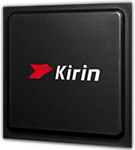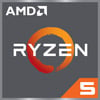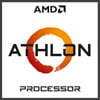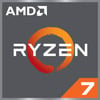
Intel Core i7-4850EQ Benchmark, Test and specs
Last updated:
The Intel Core i7-4850EQ has 4 cores with 8 threads and is based on the 4. gen of the Intel Core i7 series. The processor uses a mainboard with the BGA 1364 socket and was released in Q3/2013.
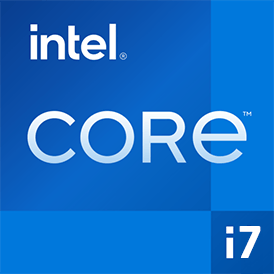
| Name: | Intel Core i7-4850EQ |
|---|---|
| Family: | Intel Core i7 (298) |
| CPU group: | Intel Core i 4000 (64) |
| Architecture: | Haswell S |
| Segment: | Desktop / Server |
| Generation: | 4 |
| Predecessor: | -- |
| Successor: | Intel Core i7-5850EQ |
CPU Cores and Base Frequency
The Intel Core i7-4850EQ has 4 CPU cores and can calculate 8 threads in parallel. The clock frequency of the Intel Core i7-4850EQ is 1.60 GHz (3.20 GHz). The number of CPU cores greatly affects the speed of the processor and is an important performance indicator.
| CPU Cores / Threads: | 4 / 8 |
|---|---|
| Core architecture: | normal |
| Cores: | 4x |
| Hyperthreading / SMT: | Yes |
|---|---|
| Overclocking: | No |
| Frequency: | 1.60 GHz |
| Turbo Frequency (1 Core): | 3.20 GHz |
| Turbo Frequency (4 Cores): | -- |
Internal Graphics
The Intel Core i7-4850EQ has integrated graphics, called iGPU for short. Specifically, the Intel Core i7-4850EQ uses the Intel Iris Pro Graphics 5200, which has 320 texture shaders and 40 execution units. The iGPU uses the system's main memory as graphics memory and sits on the processor's die.
| GPU name: | Intel Iris Pro Graphics 5200 |
|---|---|
| GPU frequency: | 0.65 GHz |
| GPU (Turbo): | 1.00 GHz |
| Compute units: | 40 |
| Shader: | 320 |
| Hardware Raytracing: | No |
| Release date: | Q2/2013 |
| Max. displays: | 3 |
|---|---|
| Generation: | 7.5 |
| Direct X: | 11.1 |
| Technology: | 22 nm |
| Max. GPU Memory: | 2 GB |
| Frame Generation: | No |
Hardware codec support
A photo or video codec that is accelerated in hardware can greatly accelerate the working speed of a processor and extend the battery life of notebooks or smartphones when playing videos.
| h265 / HEVC (8 bit): | No |
|---|---|
| h265 / HEVC (10 bit): | No |
| h264: | Decode / Encode |
| VP8: | No |
| VP9: | No |
| AV1: | No |
|---|---|
| AVC: | Decode / Encode |
| VC-1: | Decode |
| JPEG: | Decode |
Memory & PCIeThe processor can use up to 32 GB memory in 2 (Dual Channel) memory channels. The maximum memory bandwidth is 25.6 GB/s. The memory type as well as the amount of memory can greatly affect the speed of the system. |
|
| Memory type: | Memory bandwidth: |
|---|---|
| DDR3L-1333 DDR3L-1600 | 21.3 GB/s 25.6 GB/s |
| Max. Memory: | 32 GB |
| Memory channels: | 2 (Dual Channel) |
| ECC: | Yes |
| PCIe: | 3.0 x 16 |
| PCIe Bandwidth: | 15.8 GB/s |
Thermal ManagementThe thermal design power (TDP for short) of the processor is 47 W. The TDP specifies the necessary cooling solution that is required to cool the processor sufficiently. The TDP usually gives a rough idea of the actual power consumption of the CPU. |
|
|---|---|
| TDP (PL1 / PBP): | 47 W |
| TDP (PL2): | -- |
| TDP up: | -- |
| TDP down: | -- |
| Tjunction max.: | 100 °C |
Technical details
The Intel Core i7-4850EQ is made in 22 nm. The smaller the manufacturing process of a CPU, the more modern and energy-efficient it is. Overall, the processor has 6.00 MB cache. A large cache can greatly speed up the processor's speed in some cases such as games.
| Technology: | 22 nm |
|---|---|
| Chip design: | Monolithic |
| Socket: | BGA 1364 |
| L2-Cache: | -- |
| L3-Cache: | 6.00 MB |
| AES-NI: | Yes |
| Operating systems: | Windows 10, Linux |
| Virtualization: | VT-x, VT-x EPT, VT-d |
|---|---|
| Instruction set (ISA): | x86-64 (64 bit) |
| ISA extensions: | SSE4.1, SSE4.2, AVX2 |
| Release date: | Q3/2013 |
| Release price: | -- |
| Part Number: | -- |
| Documents: | Technical data sheet |
Rate this processor
Benchmark results

The benchmark results for the Intel Core i7-4850EQ have been carefully checked by us. We only publish benchmark results that have been created by us or that have been submitted by a visitor and then checked by a team member. All results are based on and fullfill our benchmark guidelines.
iGPU - FP32 Performance (Single-precision GFLOPS)
The theoretical computing performance of the internal graphics unit of the processor with simple accuracy (32 bit) in GFLOPS. GFLOPS indicates how many billion floating point operations the iGPU can perform per second.

|
AMD A10-6700
AMD Radeon HD 8670D @ 0.84 GHz |
||

|
AMD A10-6790K
AMD Radeon HD 8670D @ 0.84 GHz |
||
|
|
HiSilicon Kirin 990E 5G
ARM Mali-G76 MP14 @ 0.60 GHz |
||
|
|
Intel Core i7-4850EQ
Intel Iris Pro Graphics 5200 @ 1.00 GHz |
||

|
Intel Core i3-N300
Intel UHD Graphics 13th Gen (32 EU) @ 1.25 GHz |
||

|
Intel Core i3-N305
Intel UHD Graphics 13th Gen (32 EU) @ 1.25 GHz |
||
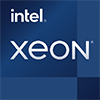
|
Intel Xeon W-10855M
Intel UHD Graphics 10th Gen (32 EU) @ 1.20 GHz |
||
Benchmarks
Popular comparisons
back to index



